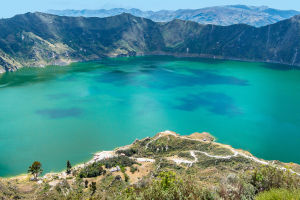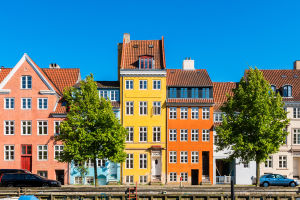Lykkers, get ready for a journey through time at one of Ecuador's most fascinating archaeological sites.
Perched high in the Andes, Ingapirca brings together ancient engineering, symbolic design, and a blend of two powerful civilizations.
Here's what to expect, where it is, how to get there, and all the details to help you plan your visit.
What to Expect at Ingapirca
A Site of Dual Heritage
Ingapirca, meaning "Inca wall" in Quechua, stands as Ecuador's largest and most important archaeological complex. It represents a unique fusion between two cultures: the Cañari and the Inca.
The Cañari, who flourished for nearly a millennium, built structures aligned with lunar cycles, while the Inca later added their own solar-focused architecture.
Symbolism in Stone
The layout of Ingapirca is thought to resemble a puma ready to leap, reflecting both animal symbolism and celestial alignment. The blend of curved lunar paths and straight solar lines captures the essence of how these two cultures perceived the universe.
The Temple of the Sun
The most iconic structure is an elliptical temple built by the Inca atop a sacred Cañari rock. This sun temple was designed to capture sunlight at specific times of the year, especially during Inti Raymi, the winter solstice celebration.
Things to See and Do
Visit the Temple of the Moon Area
Before the Inca arrived, this location hosted a circular temple dedicated to the moon. Near it lies the tomb of a noblewoman, possibly a spiritual leader, surrounded by other burial sites. A stone stele shaped like a puma stands over this sacred space.
Observe the Lunar Calendar Rock
One of the most mysterious features is a large stone with 28 carved cups. These collected rainwater and reflected the moon, forming a calendar used to time planting and harvesting seasons.
Admire the Architecture
Walk among the impressive green stone blocks of Inca construction, known for their seamless dry-stone technique. Notice the contrast with earlier structures made by the Cañari using warm-toned stones and mortar.
Take in Panoramic Views
The site sits at over 3,200 meters above sea level. The surrounding Andean scenery is stunning, with rolling mountains and open skies providing a breathtaking backdrop.
Where It Is and How to Get There
Location
Ingapirca is located approximately 80 kilometers (about 50 miles) south of Cuenca, in Ecuador's Cañar Province. It rests on a high-altitude plateau in the Andes.
Getting There
From Cuenca, the journey takes around two hours by car or bus. Local tour operators offer day trips with guides, or visitors can take direct buses from Cuenca's main terminal to the nearby town of El Tambo, followed by a short taxi ride to the site.
Tickets and Opening Hours
Opening Hours
Ingapirca is open every day of the week. Visiting hours are generally from 9:00 AM to 4:30 PM. However, it's always best to confirm current hours before planning your trip.
Entrance Fees
The entry fee is typically around $2 for Ecuadorian citizens and $6 for international visitors.
Extra Tips for Visitors
Climate and Altitude
Being at a high elevation, the air is thin and the weather can shift quickly. Dress in layers and bring sun protection, as the UV rays can be strong even on cloudy days.
Local Culture
The Quechua language is still spoken in the region, and many local customs reflect ancestral traditions. Visitors are encouraged to be respectful and curious about the living heritage of the area.
Facilities
A small visitor center with a museum provides more context about the site. There are restrooms and a basic café available on-site. Souvenirs made by local artisans can also be found nearby.
In Summary
Ingapirca is more than just an archaeological site—it's a window into two powerful ways of understanding the world, from the lunar wisdom of the Cañari to the solar precision of the Inca. For Lykkers seeking both adventure and meaning in their travels, this destination offers a profound experience framed by natural beauty and timeless ingenuity. Don't miss the chance to walk among ancient stones that still speak of the skies.


